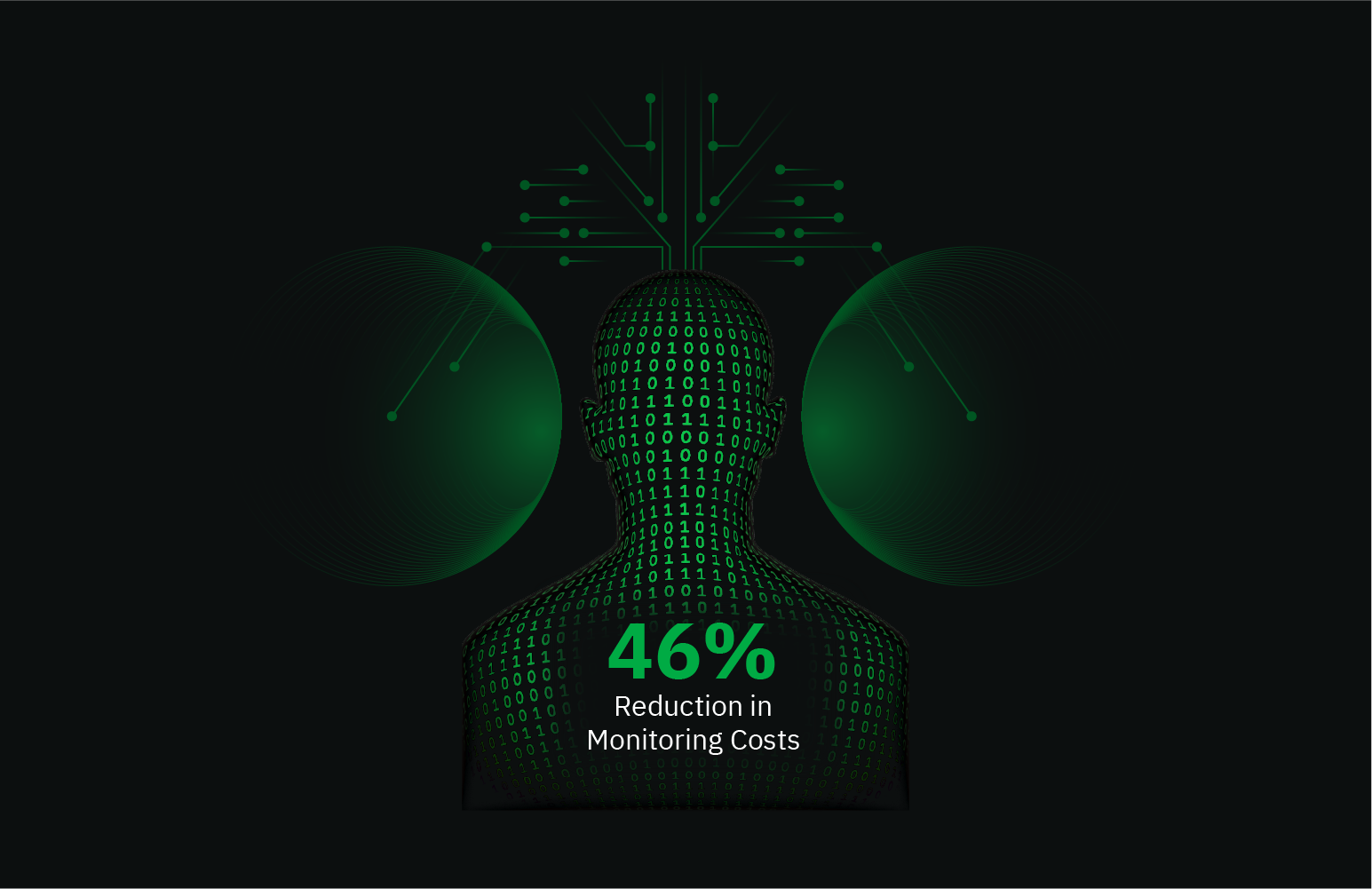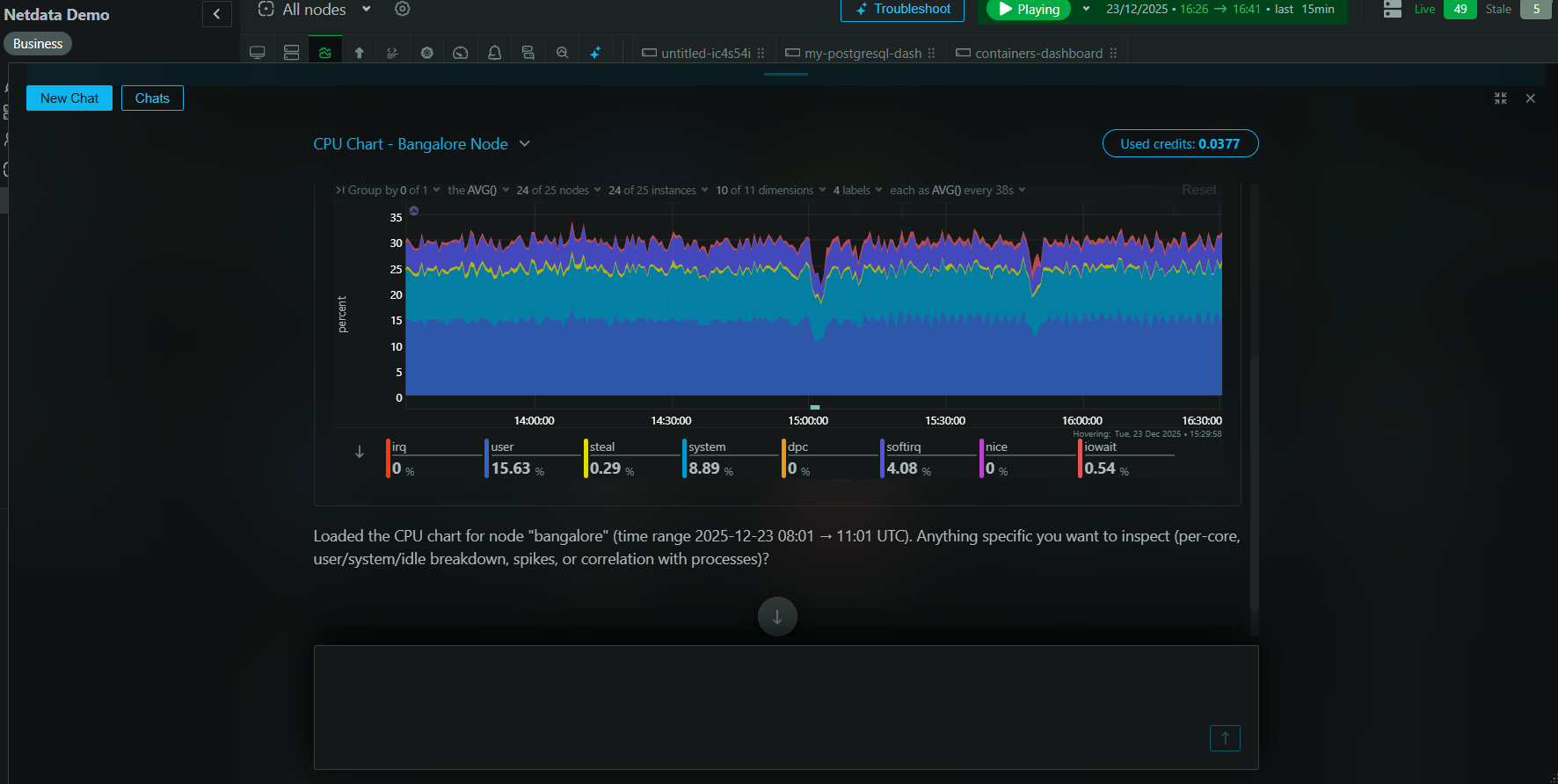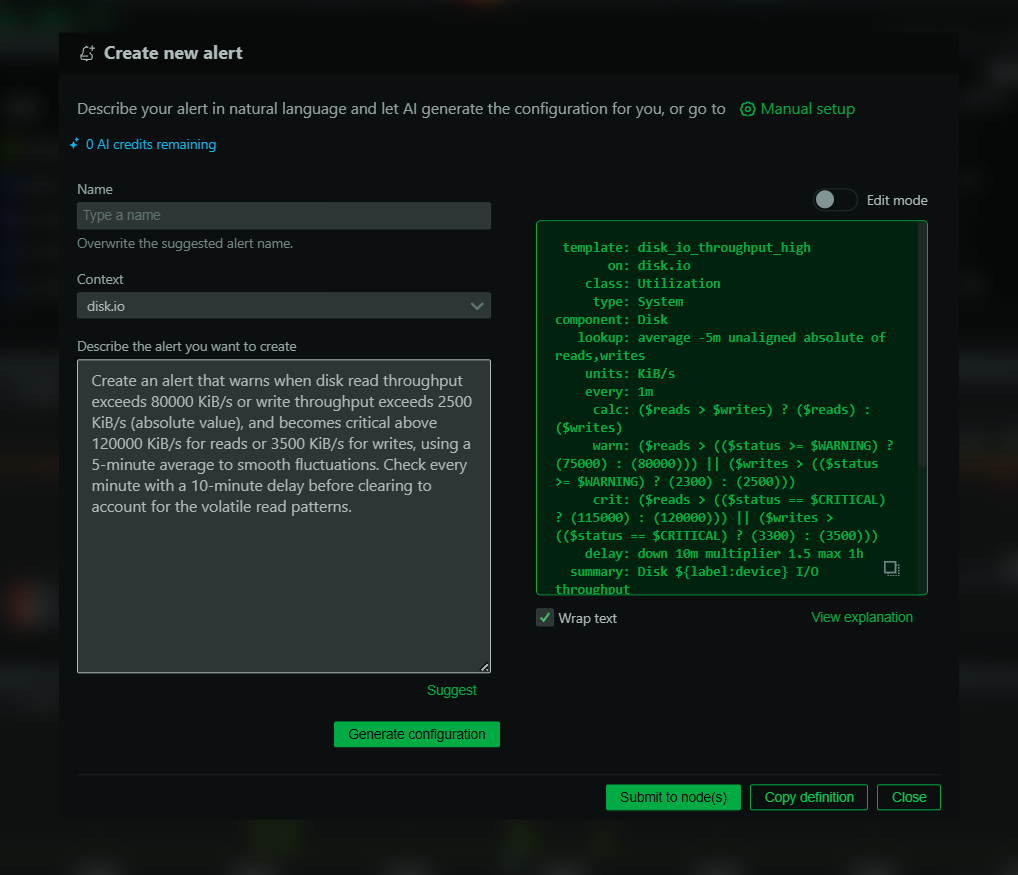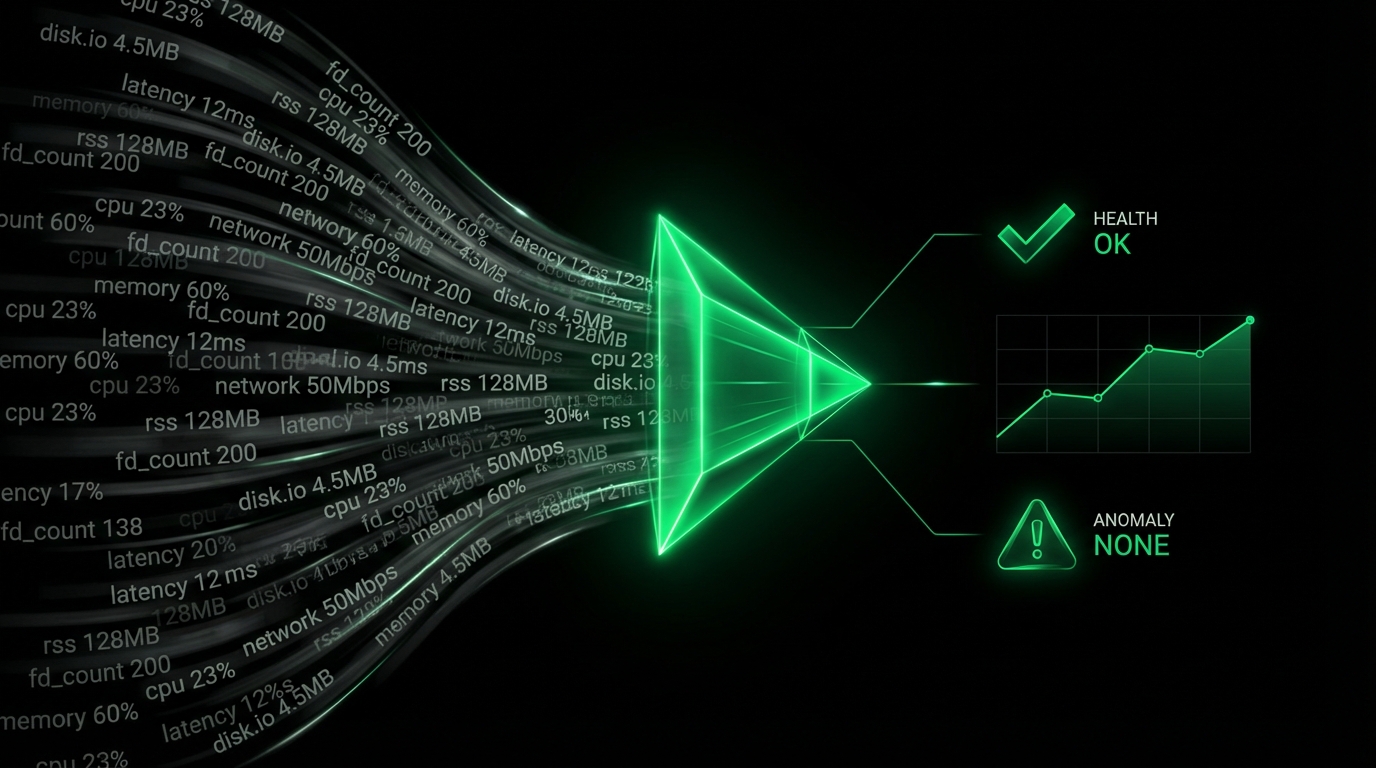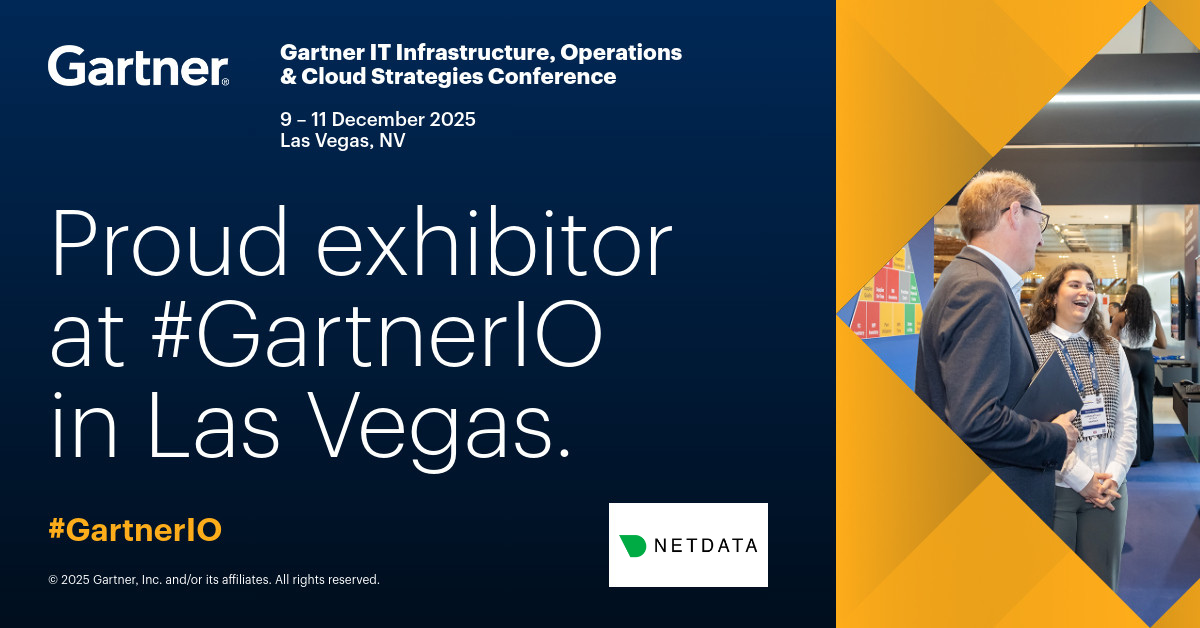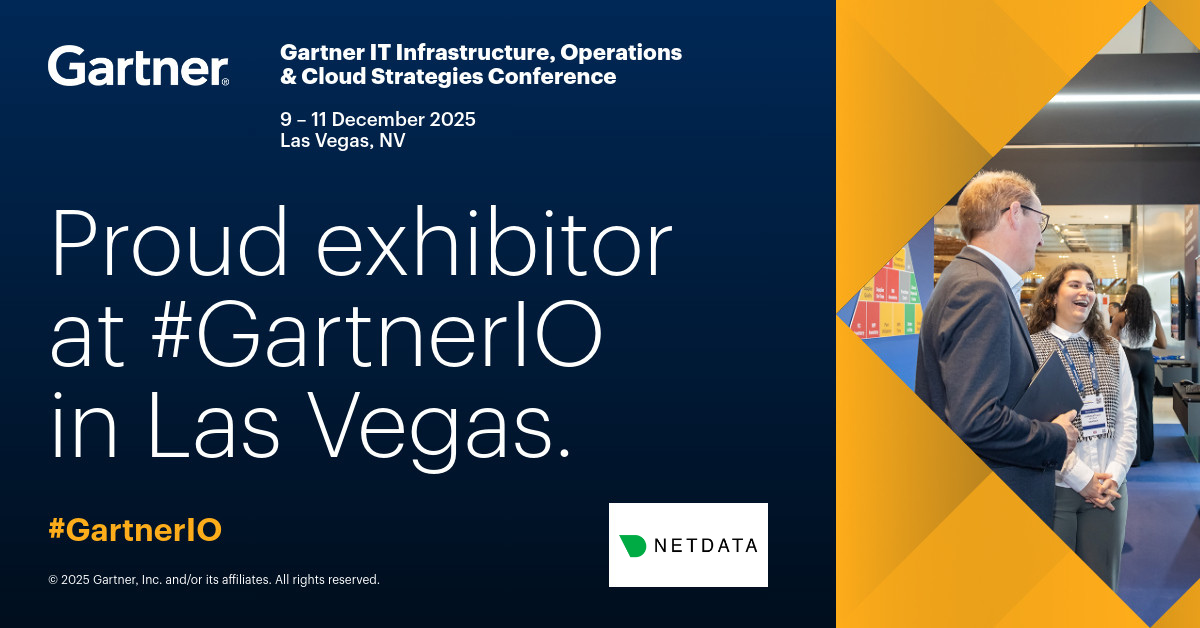80% of decision-makers globally acknowledge that digital infrastructure is essential for reaching business goals. However, IT infrastructure is becoming increasingly distributed and complex. Organizations are managing hundreds—even thousands—of nodes across cloud, on-premise, and edge environments.
This predicament makes effective monitoring across all systems more essential than ever. In turn, this drives the demand for valuable real-time insights through scalable monitoring solutions like Netdata.
If you’re managing a large infrastructure but haven’t fully embraced Netdata, now is the time to reconsider. Let’s take a look at the benefits you’ll get, below.
The Benefits You Get Scaling Netdata Across Your Entire Infrastructure
1. Infinite Scalability for Large Infrastructures
Infrastructure scalability is no longer a nice to have—it’s a necessity. As organizations manage growing networks of servers, VMs, containers, and IoT devices, the ability to scale monitoring without sacrificing performance or visibility is of great importance.
- Decentralized Structure: Netdata’s decentralized architecture ensures that you can scale horizontally, whether you have 100 or 1,000 nodes. Each node runs an independent monitoring agent, meaning that adding more nodes will not overload a central system or slow down performance.
- Lightweight System: Netdata’s architecture is lightweight, meaning it won’t consume excessive CPU or memory resources, which is essential when monitoring at scale. The result? Real-time, 1-second granularity data across all nodes, ensuring nothing slips through the cracks.
- Smooth Scaling: Scaling with Netdata is effortless. With support for auto-discovery, the platform can instantly detect services across new nodes, generate out of the box visualizations for all metrics found, and out-of-the-box alerts—all without requiring any manual setup. Whether you’re monitoring a few servers or an entire data center, Netdata makes scaling seamless and automated.
2. Holistic Visibility Across All Systems
Partial visibility leads to blind spots, which can result in undetected issues that threaten your infrastructure. For teams managing hundreds or thousands of nodes, having fragmented monitoring is no longer sufficient. A unified view across all systems is essential for troubleshooting, performance optimization, and downtime prevention. This is where Netdata truly shines!
- Complete Real-time Visibility: By adding all your nodes to Netdata, you gain comprehensive, real-time visibility across your entire infrastructure. The platform provides detailed metrics on every aspect of your systems—CPU, memory, disk I/O, and network traffic—all within a single pane of glass. This holistic visibility is essential for identifying performance bottlenecks, spotting anomalies, and ensuring that all systems operate optimally.
- Monitor everything: Collects all metrics available so you have a full view and easily detect faults.
- AI-driven Detection: With AI-powered anomaly detection on every single metric, Netdata automatically warns you about abnormal behaviors, helping you address issues before they escalate into bigger problems.
- Proven Proactive Monitoring Approach: 80% of G5000 organizations are adopting proactive monitoring strategies to maintain operational resiliency and security. Full visibility across all your nodes with Netdata ensures that you, too, can stay ahead of potential issues, keeping your systems online and reliable.
3. Accelerated Troubleshooting and Incident Response
When you’re managing hundreds of nodes, troubleshooting can become a daunting task. That’s where Netdata helps you again.
- Real-time Monitoring and Visualizations: With Netdata’s real-time monitoring and detailed visualizations, you can quickly pinpoint the root cause of any issue across your infrastructure.
- Easy Cross-referencing: Adding all your nodes to Netdata means you can cross-reference performance data across systems, making it easier to identify which node or service is causing the issue. For instance, a sudden spike in latency across web applications might be traced back to a specific server’s disk I/O bottleneck. Netdata’s intuitive dashboards allow you to zoom in on that particular node and resolve the issue quickly—saving valuable time and reducing the impact on end-users.
- Preconfigured Alerts: The moment you install Netdata, you get hundreds of preconfigured alerts. This Ensures that you’re notified of potential issues before they affect your users. These alerts are customizable, so you can fine-tune them to match your specific infrastructure needs, allowing you to focus on what matters the most.
4. Unified Monitoring for Complex Environments
For large organizations, the ability to monitor diverse environments—on-premise servers, cloud instances, containers, network, and even IoT devices—is essential. The complexity of managing multiple tools for different parts of your infrastructure can lead to inefficiencies and gaps in monitoring coverage.
- Extensive Integrations: Netdata offers extensive integrations with over 800 systems, applications, and platforms. Whether you’re monitoring your AWS infrastructure, Docker containers, or MySQL databases, Netdata unifies all these metrics into a single, cohesive view.
- Centralized Monitoring: By adding all your nodes, you can monitor every part of your infrastructure from one place, removing the need for juggling multiple monitoring tools.
- Comprehensive Approach: This consolidation simplifies your monitoring setup and also ensures that no part of your infrastructure is left unchecked.
5. Improved Resource Optimization and Cost Efficiency
As infrastructures grow, so do the costs associated with monitoring. Many enterprise monitoring platforms have usage-based pricing models, where the cost increases exponentially with the number of collected metrics. For organizations managing large infrastructures, this can lead to a substantial increase in operational costs.
- Cost-efficient Model: Netdata offers a cost-efficient alternative. Its pay-per-monitored node model means you can monitor as many devices as you need and collect as many metrics as you possibly can, without worrying about excessive fees or hidden costs.
- Detailed Insights: By providing detailed insights into resource usage, Netdata also helps you optimize your infrastructure. You can identify underutilized resources and redistribute workloads to ensure that your systems are operating at peak efficiency.
6. Enterprise-Grade Security and Data Privacy
For organizations managing sensitive data or operating in regulated industries, security and data privacy are top priorities. Netdata understands this, which is why its platform is built with enterprise-grade security features.
- Secure by design: Netdata prioritizes data protection with a security-first approach. The Netdata Agent and Netdata Cloud are built to ensure safe and private operations.
- Safeguard user data: with data isolation, encryption, and resilience against security threats, Netdata Cloud guarantees data protection by not storing metric data and utilizing secure identification and authorization.
- On-premise Monitoring: Even if you are using the cloud offering, our monitoring data always remains on your premises, and only minimal metadata is shared with Netdata Cloud for centralized management. This ensures that sensitive information stays within your control at all times.
- Designed to Meet High Demands Safely: Overall, Netdata’s security features are designed to meet the rigorous demands of enterprise environments - offering you peace of mind as you scale your infrastructure.
7. Enhanced Collaboration and Team Efficiency
Effective collaboration is crucial for maintaining optimal system performance. By adding your infrastructure to Netdata, you create a unified platform that significantly enhances team collaboration and overall efficiency. This comprehensive approach to monitoring ensures that all team members have access to the same real-time data, fostering better communication and more informed decision-making processes.
- Shared Dashboards: Netdata’s centralized dashboards allow team members to access and analyze the same real-time data simultaneously. This shared view eliminates information silos and ensures everyone is working with the most up-to-date information, leading to faster problem resolution and more cohesive teamwork.
- Role-Based Access Control: Netdata’s robust access management features allow you to set up different access levels for team members based on their roles, ensuring both security and collaboration. Complementing this is SCIM integration, which streamlines user provisioning and deprovisioning using identity providers like Okta and Azure AD.
With SCIM, user roles are synchronized automatically, reducing manual workload and ensuring up-to-date, secure access management. SCIM also supports operations like filtering and patch updates, enhancing control and flexibility in large-scale infrastructures. - Centralized Alerting: With all nodes integrated into Netdata, your team benefits from a centralized alerting system. This means that all team members can receive and respond to alerts from a single platform, streamlining incident response and reducing the risk of overlooked issues.
8. Improved Capacity Planning and Resource Allocation
Effective capacity planning and resource allocation are critical for maintaining optimal performance and controlling costs in large-scale infrastructures. By integrating all your nodes into Netdata, you gain access to comprehensive data that enables more informed decision-making about resource allocation and future capacity needs.
- Trend Analysis: Netdata’s long-term data retention capabilities allow for in-depth trend analysis across your entire infrastructure. This historical perspective is invaluable for capacity forecasting, enabling you to anticipate future resource needs based on past usage patterns.
- Resource Optimization: With a holistic view of your infrastructure, you can easily identify underutilized resources across all your systems. This insight allows for more efficient resource allocation, potentially reducing costs and improving overall system performance.
- Predictive Scaling: By leveraging historical data from all your nodes, Netdata enables you to anticipate future resource needs more accurately. This predictive capability allows for proactive scaling, ensuring that your infrastructure can handle increased loads without performance degradation.
9. Enhanced Security Posture
With evolving cybersecurity threats, maintaining a robust security posture is paramount. By monitoring all nodes with Netdata, you significantly enhance your overall security stance, providing a comprehensive view of potential vulnerabilities and threats across your entire infrastructure.
- Anomaly Detection: Netdata’s AI-powered anomaly detection capabilities can identify unusual patterns that might indicate security threats. By applying this technology across all your nodes, you create a powerful early warning system for potential security incidents.
- Audit Trail: Maintaining a detailed record of system activities across all nodes is essential for both compliance and forensic purposes. Netdata’s comprehensive monitoring ensures that you have a complete audit trail, facilitating post-incident analysis and helping meet regulatory requirements.
10. Improved DevOps and CI/CD Integration
Integrating monitoring into your DevOps and CI/CD pipelines is essential for maintaining high-quality releases and ensuring optimal system performance. By adding all your nodes to Netdata, you create a powerful foundation for enhancing your DevOps practices and streamlining your CI/CD processes.
- Performance Benchmarking: With Netdata monitoring all your nodes, you can easily compare performance metrics before and after deployments across all environments. This comprehensive view allows you to quickly identify any performance regressions or improvements introduced by new code changes, ensuring that each release maintains or enhances system performance.
- Automated Testing: Netdata’s extensive API and integration capabilities allow you to incorporate performance metrics directly into your CI/CD pipeline. By automating performance testing across all monitored nodes, you can catch potential issues early in the development cycle, reducing the risk of performance-related problems in production.
- Faster Feedback Loops: With real-time data from all nodes readily available, development teams can quickly assess the impact of their changes on the entire infrastructure. This rapid feedback enables faster iterations and more informed decision-making throughout the development process, ultimately leading to higher-quality software releases.
11. Better Multi-Cloud and Hybrid Cloud Management
As organizations increasingly adopt multi-cloud and hybrid cloud strategies, the ability to effectively monitor and manage resources across diverse environments becomes important. By integrating your whole infrastructure into Netdata, regardless of their location or platform, you gain a unified view of your entire infrastructure, simplifying the management and optimization of complex cloud setups.
- Unified View: Netdata provides a single dashboard for monitoring all your cloud resources alongside on-premises infrastructure. This consolidated view eliminates the need to switch between multiple monitoring tools, saving time and reducing the risk of overlooking critical issues in any part of your infrastructure.
- Cross-Platform Comparison: With all nodes monitored in Netdata, you can easily compare performance and costs across different cloud providers and your own data centers. This comprehensive insight enables better decision-making for resource allocation and helps optimize your multi-cloud strategy.
- Cloud-Agnostic Monitoring: Netdata’s extensive integrations allow you to use consistent metrics and alerting regardless of where your resources are hosted. This uniformity simplifies monitoring and troubleshooting processes, even in complex hybrid cloud environments, ensuring that your team can maintain high performance across all platforms.
12. Simplified Compliance Management
For organizations operating in regulated industries, maintaining compliance with various standards and regulations is a central concern. Adding all your nodes to Netdata can significantly streamline your compliance efforts by providing comprehensive monitoring across your entire infrastructure.
- Centralized Logging: Netdata allows you to collect and analyze logs from all systems in one place, simplifying audit processes and making it easier to demonstrate compliance with regulatory requirements. This centralized approach ensures that you have a complete record of system activities across your entire infrastructure.
- Data Retention: Netdata enables you to configure data retention policies to meet specific regulatory requirements across all monitored systems. This ensures that you maintain the necessary historical data for compliance purposes without overwhelming your storage resources.
Adding Your Infrastructure to Netdata: It’s Easier Than You Think!
Adding more nodes to Netdata is remarkably simple. With a single command, the Netdata agent can be installed on each node, and from there, the platform handles everything else. Netdata’s auto-detection capabilities eliminate the need for manual configuration, which is a game-changer for organizations with large infrastructures. Once installed, each node automatically starts collecting and streaming metrics to the dashboard.
For teams managing hundreds of nodes, this streamlined deployment process is vital. Additionally, using tools like Ansible, Terraform, and Puppet, you can automate the deployment of Netdata across your entire infrastructure, further simplifying the process. This means that no matter how large or distributed your infrastructure is, adding it to Netdata is fast and efficient.
For example, the Netdata Cloud Terraform Provider enables Infrastructure as Code (IaC) practices, automating the management of resources like spaces, rooms, account memberships, and notifications—such as Slack and Pagerduty. With Terraform, scaling your monitoring becomes fast and efficient, ensuring consistent configurations across even the most distributed environments.
Netdata: Leverage Your Enterprise-Ready Solution Now!
Netdata is widely loved by enterprises, and one of the main reasons is its enterprise-readiness. Our platform is already powering over 1.26 million nodes worldwide, offering real-time monitoring to organizations across a wide range of industries, including technology, finance, insurance, retail, healthcare, manufacturing, and more.
Companies like Zeroeyes, Tanla, Advastore, Acronym, Nuclera, Rocket.net, and Nodecraft rely on Netdata’s advanced monitoring and scalability to manage their infrastructure. With 71K+ GitHub stars and over 642 million Docker pulls, Netdata’s agent is trusted for its versatility, scalability, and low resource footprint.
By adopting Netdata, enterprises of any size can benefit from real-time insights, advanced anomaly detection, and automated monitoring. Our platform supports a wide array of environments, including cloud-native architectures, multi-cloud infrastructures, and containerized ecosystems like Kubernetes. Moreover, Netdata’s seamless integration with over 800 plugins ensures compatibility with a broad range of services, databases, and hardware systems.
Whether you’re aiming to enhance infrastructure performance, improve operational efficiency, or ensure high availability—Netdata is designed to meet the demands of large-scale environments. From high-frequency data collection to sophisticated visualizations and alerts, Netdata provides the tools you need to monitor all your nodes with 1-second granularity, delivering real-time visibility for proactive infrastructure management.
By leveraging Netdata, you’ll gain more than just a monitoring tool—you’ll have a robust, enterprise-ready solution tailored to your infrastructure’s unique requirements, capable of scaling as your needs evolve.
Getting Started with Netdata
As your infrastructure grows, so do your monitoring needs. That’s why Netdata offers a scalable, efficient, and unified monitoring solution perfect for growing organizations. By adding all your nodes to Netdata, you’ll gain complete visibility, faster troubleshooting capabilities, and a single platform for monitoring all your systems.
Whether you’re managing a small cloud deployment or a global network of servers, Netdata ensures that your infrastructure is always performing at its best! Make the smart choice and add all your nodes to Netdata today.



